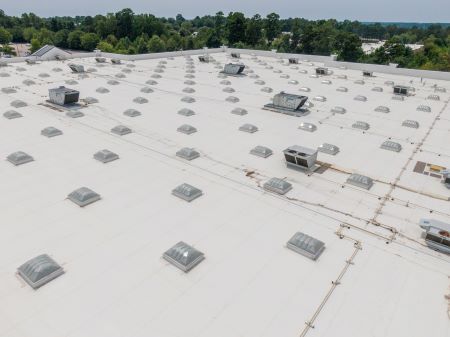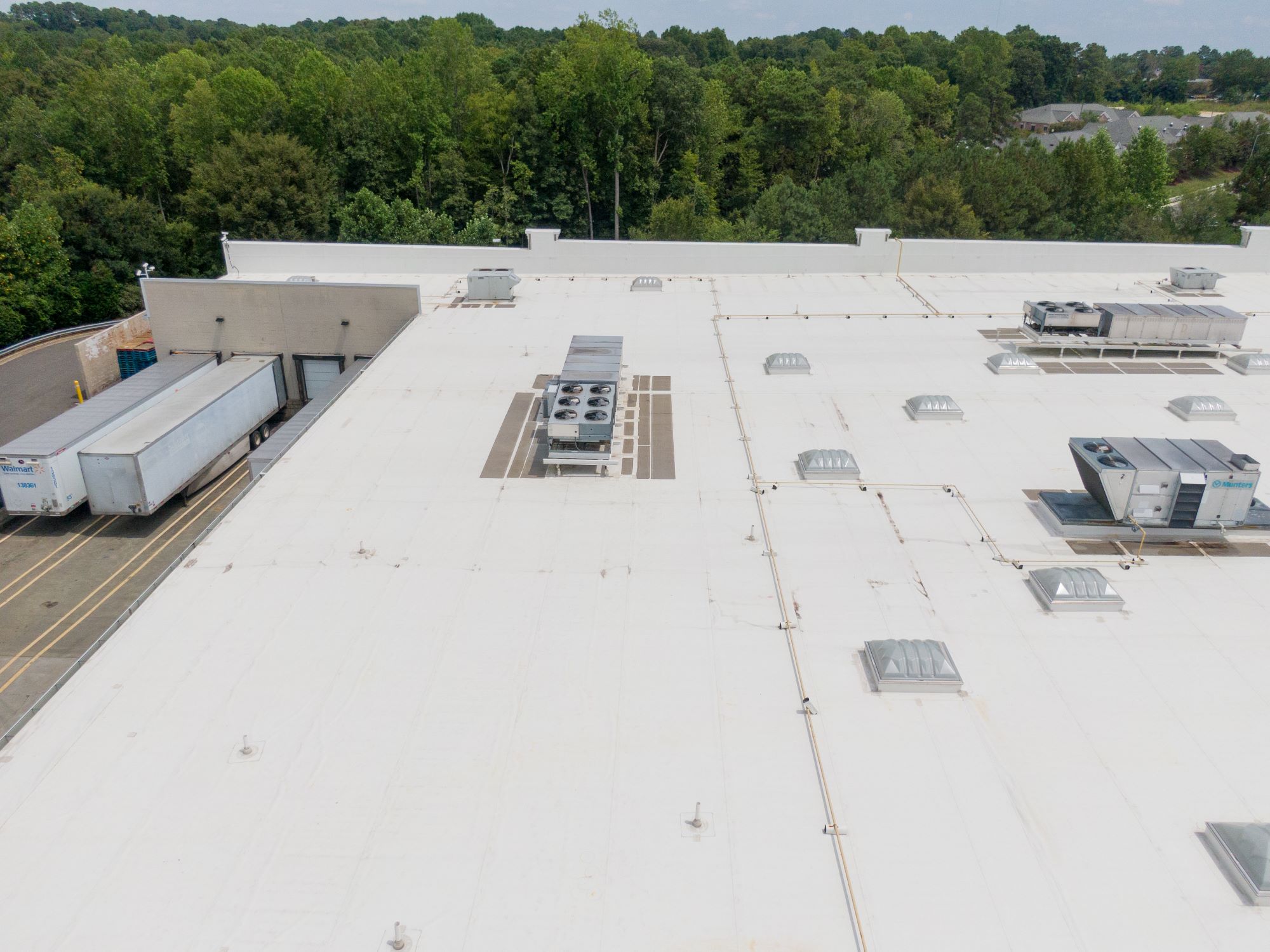Commercial roofs, designed to protect business establishments, are exposed to environmental conditions that can result in wear and tear. When damage occurs, immediate action is crucial to protect the business’s assets and maintain a safe environment. But how can a business owner or manager accurately determine the extent of roof damage? By understanding the signs, adopting routine inspections, and leveraging professional services, it’s possible to gauge the severity of the issue and opt for appropriate commercial roof repair solutions.
1. Regular Roof Inspections:
Consistent and thorough inspections are the first line of defense in assessing roof damage. By examining the roof regularly, you can spot potential issues before they escalate.
Internal Checks: Look for signs of water damage on the ceilings, walls, and attic space. Stains, molds, or a musty odor are indicators of potential roof leaks.
External Checks: Walk around the building and look for visible signs of damage on the roof, such as missing or damaged shingles, pooled water, or warped areas.
2. Understand the Types of Damages:
To gauge the extent of damage, you need to recognize the different kinds of damage a commercial roof might sustain.
Physical Damage: This includes evident signs such as cracks, blisters, punctures, or torn roofing materials.
Water Damage: Beyond visible leaks, moisture can seep into the roofing layers, potentially damaging insulation and leading to mold growth.
Structural Issues: This can include sagging areas, which might indicate excessive weight or structural weakening, potentially due to water retention or damaged support beams.
Age-related Wear: Over time, roofing materials will naturally degrade, resulting in a loss of granules, thinning areas, or general brittleness.
3. Use Technology:
There are several modern tools and techniques to assess roof damages, such as:
Infrared Roof Surveys: These can detect temperature variations on the roof’s surface, pointing out areas with moisture infiltration.
Drones: A drone equipped with a camera can provide a bird’s-eye view of the roof, identifying damages or potential weak spots.
4. Document Everything:
When identifying potential issues:
Photograph Damages: Clear photographs can be invaluable, especially if you need to make insurance claims or communicate the issues to repair professionals.
Maintain Records: Keep a log of all inspections, damages noted, and subsequent roof repair for businesses undertaken. This history can help pinpoint recurring issues or areas of concern.
5. Seek Professional Evaluation:
There are instances when the extent of damage is beyond a layperson’s assessment. In such cases:
Professional Inspection: Engage professionals to carry out a comprehensive roof survey. Their expertise can identify subtle or underlying issues that might be overlooked otherwise.
Emergency Commercial Roof Repair: In situations where damage is suddenly inflicted, such as after a severe weather event, opting for emergency commercial roof repair ensures immediate remediation, preventing further damage.
6. Consider the Age and History of the Roof:

A relatively new commercial roof with minor damages might not be of as much concern as an older one displaying the same issues. Older roofs may hide more extensive damage beneath the surface. Knowing the age of your roof and its repair history can offer context to the present damages.
7. Consult with Other Business Owners:
Reaching out to neighboring businesses or other professionals in your network can provide insights. They might have faced similar issues and can offer guidance on damage assessment and repair solutions.
8. Commercial Roof Repair Solutions:
Once you’ve determined the extent of damage,
Minor Repairs: For localized damages, spot repairs might suffice. This can include patching small leaks, replacing damaged tiles or shingles, or mending minor cracks.
Major Repairs: More extensive damages might necessitate broad repairs, such as replacing large sections of the roof or addressing structural damages.
Roof Replacement: In situations where the roof has reached the end of its life expectancy or damages are too extensive, a full roof replacement might be the most cost-effective solution in the long run.
Conclusion:
Determining the extent of damage to a commercial roof is a multi-faceted process. Regular inspections, an understanding of damage types, technological assistance, and professional expertise are crucial in making an accurate assessment. Once the extent is determined, a variety of commercial roof repair solutions, from minor fixes to major overhauls, can be implemented. Remember, when in doubt, especially in emergency situations, it’s always wise to call in the experts for a comprehensive inspection and necessary repairs. With proactive attention and the right repair strategies, you can extend the life of your commercial roof and safeguard your business premises.
- Commercial Roof Installation Tampa FL
- Flat Roof Repair Tampa FL
- Commercial Roof Maintenance Tampa FL
- Commercial Roofing Contractors Tampa FL
- Commercial Emergency Roof Service Tampa FL
- Commercial Roof Repair Tampa FL
- Roof Coating Company Tampa FL
- Flat Roof Replacement Tampa FL
- Metal Roofing Contractors Tampa FL
- Commercial Roof Replacement Tampa FL
- Flat Roof Installation Tampa FL
- Commercial Roof Installation Asheville NC
- Commercial Roof Installation Orlando FL
- Flat Roof Repair Orlando FL
- Commercial Roof Maintenance Orlando FL
- Commercial Roofing Contractors Orlando FL
- Commercial Emergency Roof Service Orlando FL
- Commercial Roof Repair Orlando FL
- Roof Coating Company Orlando FL
- Flat Roof Replacement Orlando FL
- Metal Roofing Contractors Orlando FL
- Commercial Roof Replacement Orlando FL
- Flat Roof Installation Orlando FL
- Flat Roof Repair Asheville NC
- Commercial Roof Maintenance Asheville NC
- Commercial Roofing Contractors Asheville NC
- Commercial Roof Installation Jacksonville FL
- Commercial Roofing Contractors Jacksonville FL
- Commercial Roofing Contractors Atlanta GA
- Commercial Roofing Contractors Mobile AL
- Commercial Roof Installation Atlanta GA
- Commercial Roof Installation Mobile AL
- Flat Roof Repair Jacksonville FL
- Flat Roof Repair Atlanta GA
- Flat Roof Repair Mobile AL
- Commercial Roof Maintenance Jacksonville FL
- Commercial Roof Maintenance Atlanta GA
- Commercial Roof Maintenance Mobile AL
- Commercial Emergency Roof Service Asheville NC
- Commercial Emergency Roof Service Jacksonville FL
- Commercial Emergency Roof Service Atlanta GA
- Commercial Emergency Roof Service Mobile AL
- Commercial Roof Repair Asheville NC
- Commercial Roof Repair Jacksonville FL
- Commercial Roof Repair Atlanta GA
- Commercial Roof Repair Mobile AL
- Roof Coating Company Asheville NC
- Roof Coating Company Jacksonville FL
- Roof Coating Company Atlanta GA
- Roof Coating Company Mobile AL
- Flat Roof Replacement Asheville NC
- Flat Roof Replacement Jacksonville FL
- Flat Roof Replacement Atlanta GA
- Flat Roof Replacement Mobile AL
- Metal Roofing Contractors Asheville NC
- Metal Roofing Contractors Jacksonville FL
- Metal Roofing Contractors Atlanta GA
- Metal Roofing Contractors Mobile AL
- Commercial Roof Replacement Asheville NC
- Commercial Roof Replacement Jacksonville FL
- Commercial Roof Replacement Atlanta GA
- Commercial Roof Replacement Mobile AL
- Flat Roof Installation Asheville NC
- Flat Roof Installation Jacksonville FL
- Flat Roof Installation Atlanta GA
- Flat Roof Installation Mobile AL

